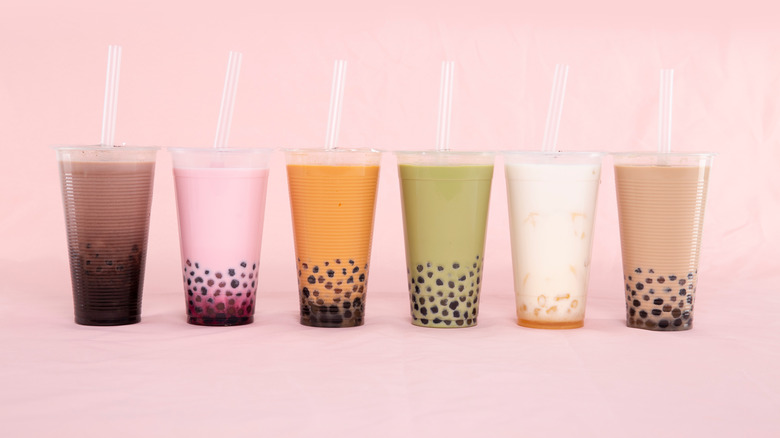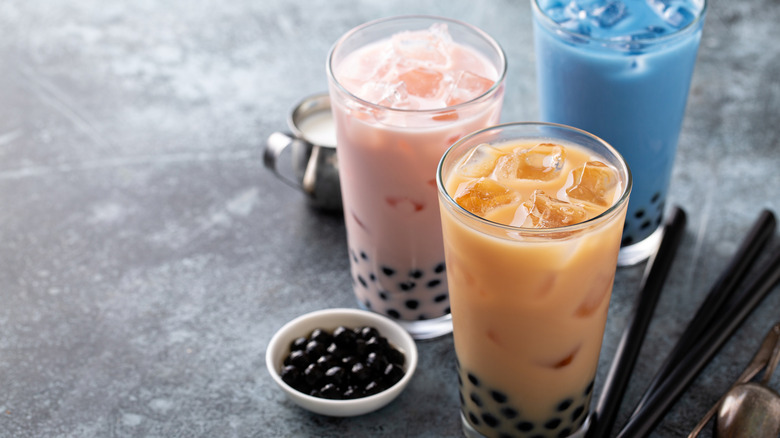The Hidden Meaning Of Bubble Tea
No matter how ubiquitous boba tea becomes, it will never stop looking like a drink from another planet, with marble-sized gelatinous spheres, bobbing mysteriously in a colorful, milky sea. It's the kind of beverage a pre-schooler might dream up while finger-painting, or a science fiction writer would concoct when imagining the drinks of the future. But instead it's ours, here on earth, right now. And every day, real human beings get to drink something that looks more like a lava lamp than a black tea without an ounce of irony. What a time to be alive!
The grooviness doesn't stop at bubble tea's far-out appearance, though. This enigmatic little panther is full of surprises, with a backstory involving dubious origins, an '80s sex symbol, and even a mysterious factor simply known as "Q." But beginning with the hidden meaning of the name itself, there's some interesting morsels. While many people may think the word "bubble" refers to the tiny, tapioca balls that make this drink what it is, the moniker actually alludes to a layer of foamy bubbles that forms at the top of the tea, says The Spruce Eats. Though there have been many iterations in recent times, the OG version of the out-of-this-world drink, according to Eater, is made by combining frothy milk and black tea, throwing in some caramelized tapioca balls and crushed ice, and giving the mixture a shake shake shake. When you turn it all about, you'll see the bubbles that give the mystifying milk tea its name.
Bubble tea's mysterious Q factor
Bubble tea is also sometimes referred to as "boba" — if you live on the West Coast of the US, or take your tea in Taiwan (where the drink originated), this may be the name you use in place of "bubble." Boba refers to the tapioca balls themselves, which in turn were allegedly named for a voluptuous woman in 1980s Hong Kong named Amy Yip. According to Eater, Yip was a sex symbol and "Boba," her nickname, was a slang term in the Chinese language that referenced "her most famous pair of physical assets." Try not to think about that the next time you order a bubble tea.
While we're talking interesting etymologies, there is one more word — or, rather, letter — worth exploring on the subject of bubble tea called "Q." The term doesn't quite translate to English, or a spoken language of any kind, because it is more of a concept. Just as Italians have the "al dente" concept (i.e. cooking pasta until just before it becomes soft, so that there is still a little bite to it), the Taiwanese have cornered the market on Q, a culinary curiosity all about texture. Think about the springy, chewy, not-too-hard, not-too-soft consistency of your bubble tea's tapioca balls, and you are grasping their Q factor. According to Roads and Kingdoms, Q comes from the Taiwanese Hokkien word k'iu, and there is no Chinese character to represent the sound. There are sweet examples of Q, like boba pearls and mochi — and savory ones too, like dumplings and fish balls. A very Q food is known as QQ.
Truly, we are living in the future, and — thanks to adorable, Instagrammable bubble teas — a very Q-t one it is, too.

